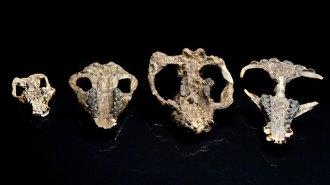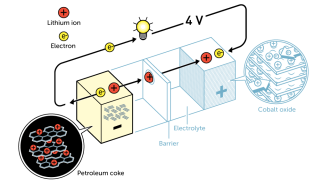Search Results
Lunar orbit
Students will practice analyzing and graphing data about the moon’s orbit. The activity will help students understand the Earth-moon system and the nature of elliptical orbits.

Here Come the (Bigger) Mammals
This guide, based on the Science News article “Here come the (bigger) mammals,” asks students to analyze a graph about a recent fossil find, discuss how organisms evolve as ecosystems change and research important fossil sites across the world.
Growing up mammal
Students will answer questions based on the Science News article “Here come the (bigger) mammals.”
Do not disturb
Students will explore the immediate and long-term effects of specific environmental disturbances, including how energy enters or leaves an ecosystem, how the biotic and abiotic characteristics of the ecosystem change and how organisms evolve under the new conditions.
Stories in rock
In this activity, students will research important fossil sites across the world and synthesize what they find into a story to present to the class.

Strontium Found in Neutron Star Crash
This guide, based on the Science News article “Strontium found in neutron star crash,” asks students to explore how elements are created. An activity from the Digital Library will help students understand the life cycle of stars and how stars produce various elements.
How are elements created?
Students will explore how elements are created — in nature and in the lab — while focusing on the concepts of atomic structure, stability and stellar evolution.
Stellar smashup creates elements
Students will answer questions based on the Science News article “Strontium found in neutron star crash.”
Unbalancing the carbon cycle
This activity covers where carbon is stored in the Earth, how carbon moves through Earth’s various spheres and how humans are impacting that carbon flow.

Nobel Prize Winners Announced
This guide, based on Science News’ article “Nobel prize winners announced,” asks students to summarize the discoveries that won the prizes, create a timeline that puts one prize in context and explore activities related to batteries from our Digital Library.
A Nobel timeline in tweets
Students will track the scientific progress associated with a discovery or advance that was awarded a Nobel Prize by creating a timeline of key events and players.
And the Nobel science prizes go to…
Students will answer questions based on the Science News article “Nobel Prize winners announced.”